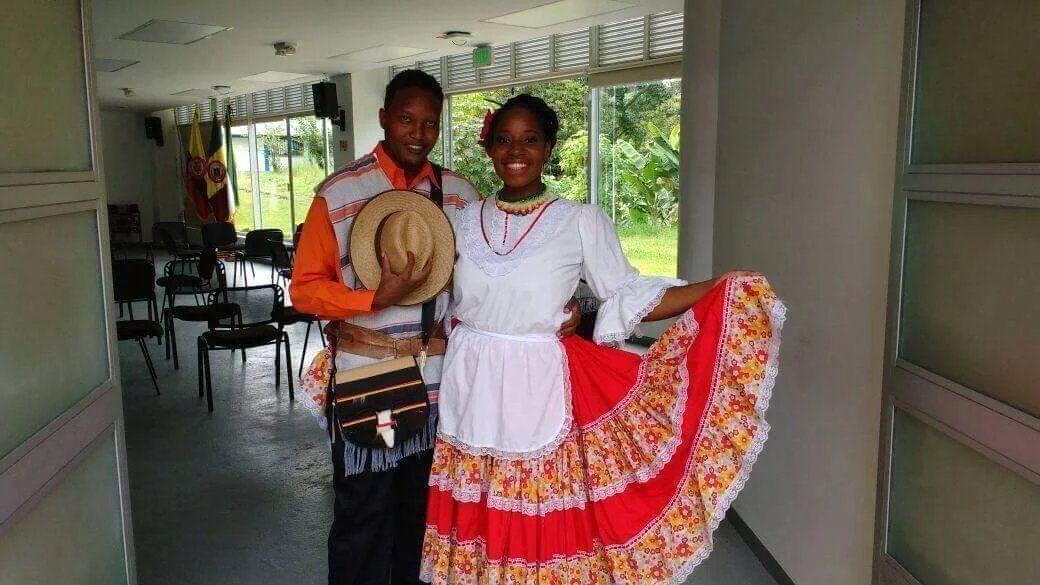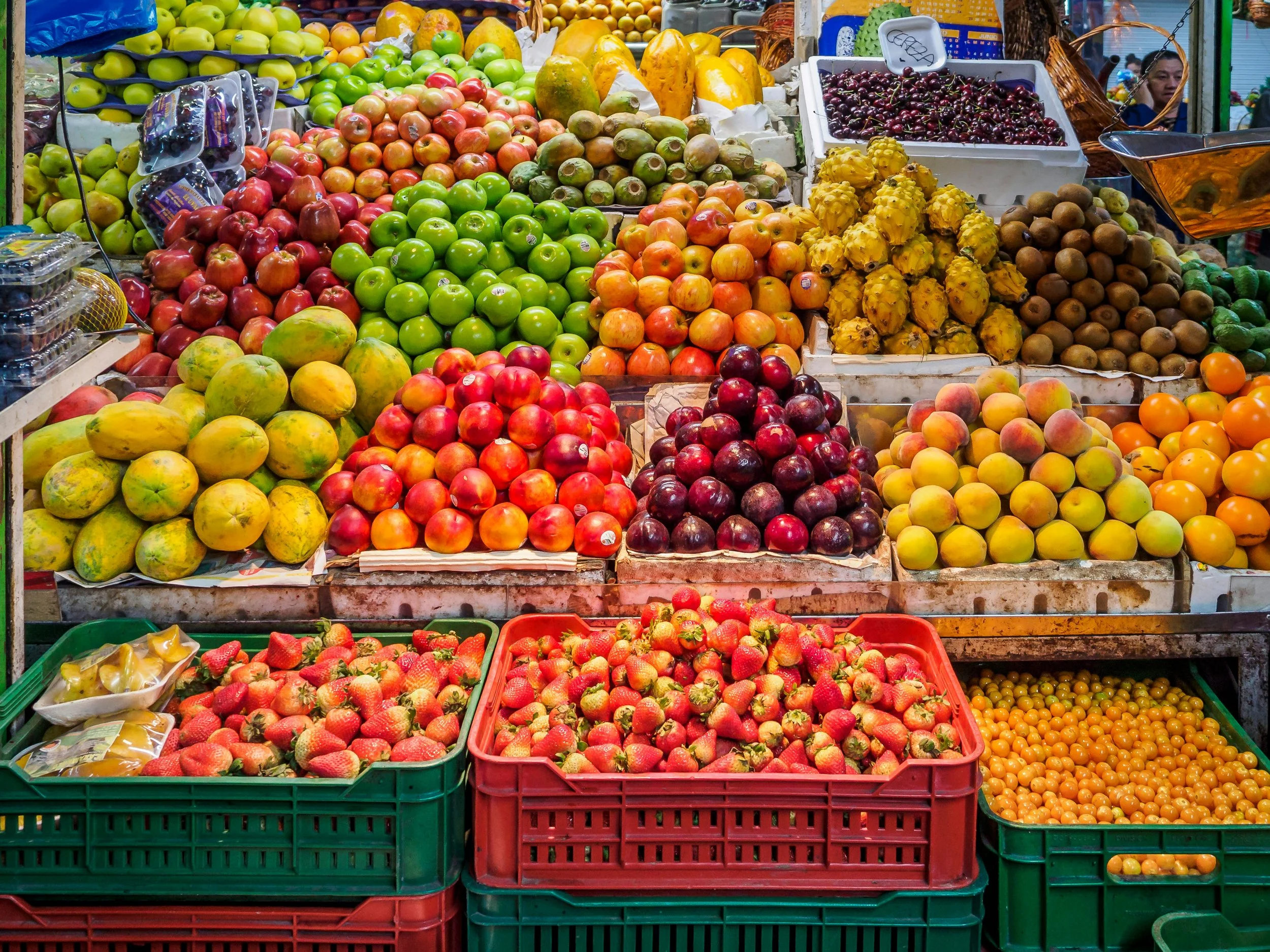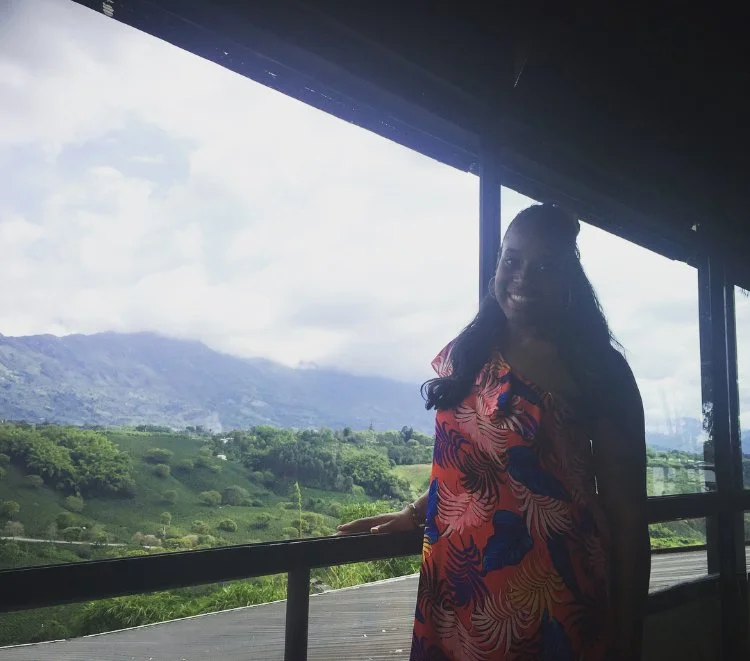Colombia
Do dodo do do dodododo do
I, somewhat reluctantly, pry open my eyelids to the delightful serenade of ‘Oh Gloria Inmarcesible’ blaring from the taxi drivers' radios outside, letting me know that it’s 6am. What is ‘Oh Gloria Inmarcesible’ you ask? It’s the Colombian national anthem, mandatorily played by law twice a day, 6am and 6pm, on every national radio or television station. It seems odd at first, but you eventually learn to use opening bars as a way to start and end your day. I absentmindedly hum it as I get out of bed, somewhat grateful that this year I work at a university, allowing me to commence my duties at the "civilized" hour of 7:40am.
Back when I worked at a secondary school, I'd already be walking to work by this hour, thanks to the 6:30am start time. I honestly thought they were joking when I first moved, but I've grown to see it as incredibly efficient. When you're this close to the equator with a strict 12 hours of sunlight, you might as well rise, shine, and get on with it, right? Also, depending on where in the country you live, you’ll be rewarded for your early rising with awe-inspiring sunrises that fill the sky with orange, pink and even purple.
I'll probably have my first of many coffees now but, aside from the fact that I'm used to the 9am start of London life, so I can't really stomach anything this early, skipping the rigamarole of making breakfast at home is a no-brainer; it's much easier to grab something on the go. Maybe I'll pick up some freshly fried buñuelos from the neighbour’s kitchen window or get some fruit from the boot of a man's car. I don’t know how sanitary it is, but I’ll be damned if it isn’t literally the best pineapple I've ever eaten.
I contemplate whether or not to wear a coat but decide it’s the wisest idea as even though Bogota is only 320 miles north of the equator, at around 8,360 feet above sea level it is usually fairly cold and grey. I imagine most people think of Colombia of just jungle but truthfully it has a bit of everything. Yes, there are tropical rainforests but there are also savannas, steppes, paramos, deserts and most of all mountains. These days, I've taken up cycling to work, bidding farewell to Bogotá's *ahem* interesting alternative to a metro system, the Transmilenio or as locals lovingly call it, the "Transmi". As with most transport systems, in theory it’s great, a BRT of epic proportions that provides the affordable transport over a sprawling city that is geographically bigger than London, Paris, Madrid and Rome. In practice, with Bogota housing a whopping 20 percent of the Colombian population, it is a little overstretched. While its generally fit for purpose, some mornings can feel like playing a high-stakes game of human Tetris. I much prefer cycling but can't help feeling a pang of nostalgia for the buskers I used to encounter. Sure, they weren't all virtuosos, but what they lacked in talent they definitely made up for in enthusiasm and general amiability. Surprisingly, being complimented in a rap freestyle at 7am is something you can actually get used to.
Once I reach the university, it's straight to the coffee machine for my second dose and a mandatory chit-chat session with my coworkers. While this is a given in Colombian work culture, I’m more in it for the latter than the former. It will surprise most people, but the coffee at work, like in most parts of the world, is consistently awful. Yes, Colombia produces some of the best coffee in the world, but a lot of the good stuff gets exported out, leaving most locals outside of the coffee regions with the reject brews. These conversations, on the other hand, are a goldmine for improving my Spanish. The Colombian accent is like the Rosetta Stone of clarity compared to other dialects. It's like having a built-in language tutor at the water cooler. Glancing around, I notice everyone's sporting the unofficial national uniform of Colombia: jeans. Sure, jeans are a global staple, but here, they're practically the flag. I can normally spot a Colombian a mile away by their dedication to denim, even in sweltering 30+ degree heat.
As I walk to my classroom, one of my students offers me some "hormigas culonas” or big booty ants. They’re not endemic to Bogotá, but my students are from all over the country. I refuse, I’ve tried them before, in terms of taste they’re OK, but I can’t really get over the fact that they are ants.
The class is just about to start when one of my students receives a call, “Leidy is calling me from a minutero (a man that sells calls by the minute on the side of the road - very handy in a pinch) she left her phone at home, so she’s going to be late.” “Leidy Dayana or Lady Taitana?” I ask, “Leidi Marcela”. No, these are not incredibly rich students with titles, these are the actual names of my students. In fact, there are thousands, if not tens of thousands of Colombian women proudly rocking the name 'Lady', in one of its many written forms. Back in the 90s, Colombians were smitten by the beauty and charm of Lady Diana and other royal family members. Since it’s common to have two first names in Spanish speaking countries most may have assumed that Lady was her name as opposed to her title. As a result, many parents thought, "Hey, why not name our baby after her?" Diana, again in one of its many forms, is a pretty common name here, so there are quite a few 'Leydi Dianas' strolling around Colombia. Other popular English names with a unique twist include Brayan Estebin (Brian Steven), Yudith Milady (Judith My lady), Jhon Maikl (John Michael), or Mishell Yesika (Michelle Jessica). I mark Leidi Marcela in as on time anyway. Some of these kids are on really strict scholarships and being late even once can land them in hot water.
After a few classes, I head down to the cafeteria for lunch. It looks like I can get a “menu ejecutivo” (rice, meat, plantains, and salad) or lechona (a roasted pig stuffed with lentils, rice and veg cooked in an outdoor brick oven for several hours). I spot my favourite, "lasagna mixta". It’s like a normal lasagna, but in addition to Bolognese there are delicious layers of chicken and mushroom smothered in creamy béchamel sauce. Italians might call it an atrocity, but I call it “yum”. I wash it down with some juice, as always there are at least 12 to choose from and most of them you won’t have heard of, because Colombia is the second most bio diverse country in the world and the sheer number of amazing fruits you can find will astound you.
Some of the teachers are going to play Tejo after work, and they ask me if I’m coming. If you’ve never heard of Tejo, you’re not alone. Even though the game dates back over 500 years, Colombia's explosive answer to curling is relatively unknown outside the country. Imagine a game where players hurl metal discs at a target, aiming for a small envelope filled with gunpowder. Yes, actual gunpowder. When hit, the little pouch goes boom, making Tejo the only sport where "explosive performance" is not just a figure of speech. I instantly say no because I know there will be more Aguadiente (Colombia’s number one liquor) than I will be able to handle. I pause to rethink because tomorrow is one of Colombia’s 18 public holidays, so technically I could, but nah, it’s best not to risk it.
On my way back home, I pass by the bakery to grab a bag of soft and warm freshly baked bread to complement the arepas I know we’ll be having for dinner. As I push my bicycle along the pavement, I hear 3 different types of music in the space of 1 minute. People often assume that Colombians only listen to salsa, but they are mistaken. Colombia is undoubtedly the “Land of a Thousand Rhythms”. Not only are there several genres that were born here Cumbia, Vallenato, Joropo, Champeta and Bambuco to name a few but Colombia is also open to music from across the world. Every year Bogota holds several “Festivales al Parque” free open-air festivals where locals and tourist alike can enjoy music from all over the world. The most popular of these is Rock al parque where upwards of 400,000 people head bang to the dulcet sounds of hardcore, metal, ska, punk and other genres.
Just as I turn the corner to enter my house, I catch the cheese vendor making his rounds, hawking his wares with gusto: "Cheese, cheese, cheese! Cheese for your arepas, Cheese for your chocolate!" I buy a block of his freshly made curds, politely declining his offer of putting it on layaway.
Once indoors, I find my mother-in-law setting the table with the arepas and hot chocolate, while my father-in-law indulges in his second to last coffee fix of the day because, like many Colombians, he drinks it to help him sleep. Personally, I've hit my caffeine limit for the day; I was actually more of a tea person back in the UK, so my three-a-day habit is testament to the fact that habits are contagious. Whilst I listen to everyone tell me about their days, I drop a slice of cheese into my hot chocolate, then wait a bit for it to melt. As is custom, I dip my bread into the resulting blend of sweet, salty, and creamy flavours, and it is simply irresistible.
I think to myself that this is one of the small but beautiful moments that make up my life in Colombia. Looking back over my day, I'm reminded of the importance of cherishing the little things and finding joy in the ordinary moments of life.








